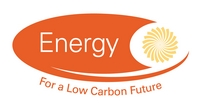Projects
Projects: Projects for Investigator |
||
| Reference Number | EP/I013288/1 | |
| Title | Ageing of printable polymer solar cells | |
| Status | Completed | |
| Energy Categories | Renewable Energy Sources(Solar Energy, Photovoltaics) 100%; | |
| Research Types | Basic and strategic applied research 100% | |
| Science and Technology Fields | PHYSICAL SCIENCES AND MATHEMATICS (Chemistry) 50%; PHYSICAL SCIENCES AND MATHEMATICS (Physics) 50%; |
|
| UKERC Cross Cutting Characterisation | Not Cross-cutting 100% | |
| Principal Investigator |
Professor I Samuel No email address given Physics and Astronomy University of St Andrews |
|
| Award Type | Standard | |
| Funding Source | EPSRC | |
| Start Date | 01 June 2011 | |
| End Date | 30 November 2013 | |
| Duration | 30 months | |
| Total Grant Value | £589,517 | |
| Industrial Sectors | Energy | |
| Region | Scotland | |
| Programme | Energy : Energy | |
| Investigators | Principal Investigator | Professor I Samuel , Physics and Astronomy, University of St Andrews (99.999%) |
| Other Investigator | Professor J Loos , College of Science and Engineering, University of Glasgow (0.001%) |
|
| Industrial Collaborator | Project Contact , Research Partner in China (0.000%) Project Contact , ECN (Energy research Centre of The Netherlands), The Netherlands (0.000%) |
|
| Web Site | ||
| Objectives | ||
| Abstract | Solar power is by far the most abundant renewable energy source. However, at present its use is limited by the high cost of solar cells, so that we continue to obtain most of our power from fossil fuels. Polymer (plastic) solar cells are an exciting research field that aims to address this problem, as polymer solar cells could be made by simple manufacturing processes such as roll to roll coating. The result would be much lower cost solar cells, with much lower energy of production. Most research to date has focussed on the efficiency of such solar cells, and good progress has been made, leading to efficiencies approximately two thirds of commercial amorphous silicon solar cells.In this proposal we address the most important remaining issue, namely understanding and enhancing the lifetime of polymer solar cells. To do this we will combine advanced photophysical, morphological and chemical analysis of solar cells before, during and after operation to gain new insight into the factors controlling degradation of such cells. This will provide a solid foundation for developing strategies for extending the solar cell lifetime in the later part of the project.The operation of polymer solar cells depends critically on the nanometre scale arrangement of the materials, so we will use sophisticated electron tomography techniques to study the nanoscale morphology and how it changes with device operation. This will be complemented by optical and electronic measurements performed in-situ on operating solar cells. A further innovation will be to make nanoscale perforation of an encapsulation layer and combine it with electron beam techniques to study local degradation with nanometre resolution. This challenging programme requires collaboration between world-leading research groups in St Andrews, Changchun, and Glasgow to access the range of expertise and facilities to make major progress, and will lead to a new UK-China collaboration | |
| Publications | (none) |
|
| Final Report | (none) |
|
| Added to Database | 06/12/10 | |



